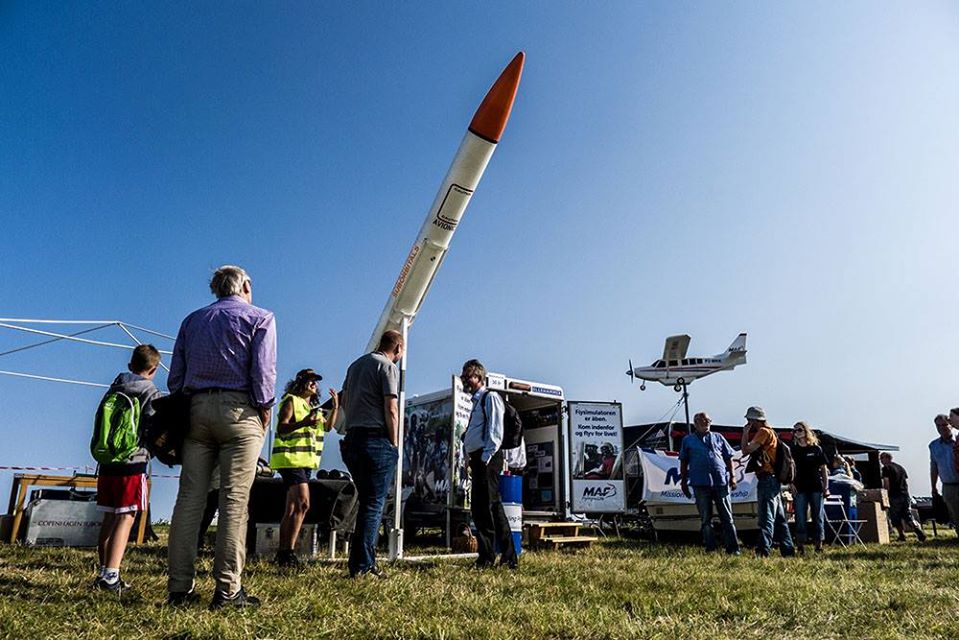A crowd-funded group of amateurs is planning to send a man into space
Most hobbyists are content with ballroom dancing or a bit of life drawing. But Copenhagen Suborbitals, a group of 50 amateur space enthusiasts in Denmark, spend their spare time working on rocket launches. Their lofty goal is to send a man into space.


Most hobbyists are content with ballroom dancing or a bit of life drawing. But Copenhagen Suborbitals, a group of 50 amateur space enthusiasts in Denmark, spend their spare time working on rocket launches. Their lofty goal is to send a man into space.
Mads Stenfatt, who’s in charge of the rockets’ parachutes, says the members of Copenhagen Suborbitals have day jobs and work on the space mission just “for the heck of it.”
“We want to do it because we can,” he tells Quartz. “It’s like when Edmund Hillary was asked why he wanted to climb Mount Everest and he said, ‘Because it’s there.’ We don’t want to make money or become a company. We only want to prove that this is possible.”
Copenhagen Suborbitals was founded in 2008 and has worked on four rocket launches so far. The first one, in 2010, didn’t get off the ground and the second, in 2011, had to be shut down mid-flight. Progress has been smoother since then, and in 2013, Copenhagen Suborbitals launched the world’s first actively guided rocket that was built by amateurs.
The Suborbitals is the most advanced amateur manned space mission group in the world, simply because its members are the only amateurs with such an ambitious goal. Other amateur groups have successfully sent rockets into space (video), but Stenfatt says that Copenhagen Suborbitals has its eye on a greater challenge.
“If we wanted to do a space launch, we would have easily done that already,” he says. “But because we want to put a man on top of the rocket at the end, that makes it more interesting.” Rockets can be sent into space by making them accelerate extremely fast, says Stenfatt, but this would kill any passengers on board.
This weekend, weather permitting, Copenhagen Suborbitals is planning its fifth rocket launch. It will take place in the Baltic sea, on the Danish island Bornholm, which is technically outside Danish territory. “We’re in international waters, so we’re outside of any rules and regulations that could interfere with our project,” says Stenfatt. “We can basically do whatever we want.”
Despite its aversion to rules, the group follows extensive safety precautions and works with the coastguard to maintain a safe perimeter around the launch. Copenhagen Suborbitals is entirely crowd-funded—it raised $11,395 for the latest launch through an Indiegogo campaign—and causing harm would seriously damage any future fundraising.
For their upcoming rocket launch, Copenhagen Suborbitals expects to send a rocket just 8.3 km (5.15 miles) high, and will focus on testing a new engine and parachutes.
Stenfatt will be focused on his ballute parachute, which is inflated through a system of air vents. A second parachute will be deployed once the rocket descends back to 3km and should reduce the speed to 8 meters per second (18 mph) on landing. Stenfatt has built a predictive model to calculate where the rocket will land, and he’s ambitious about its accuracy: “I hope to be on a boat that will be at the calculated splashdown point and just catch it with my hands,” he says.
Other members of the group will be focused on the rocket’s engine, which will run off liquid oxygen and alcohol. The planned launch will be just the second time that a rocket in Denmark has flown using those liquids as energy. If all goes well, Copenhagen Suborbitals hopes that the next rocket launch will go to 20 km, which would be a European record for a liquid-fueled rocket.
There’s still a lot of work to do before Copenhagen Suborbitals can send a man into space. The group is planning to forgo a spacesuit by making the space capsule safe enough for a passenger, but members haven’t yet mapped out the precise steps to achieve that goal.
Stenfatt says he’s not sure how many launches it will take before the manned mission—“your guess is as good as mine,” he said—but the group expects to send a man into space by 2025. If Copenhagen Suborbitals manage to increase its rate to two launches per year, as Stenfatt hopes, then it will take another 20 rocket launches before there’s a passenger on board.
Copenhagen Suborbitals may be a group of amateurs, but they have the dedication of true professionals. Even if it takes a decade or longer, they don’t intend to stop until they’ve sent a man into space.